There is a wonderful museum on Henrietta Street in Dublin 1 which is dedicated to the slums and the tenements of Dublin in the rare auld times. Many of the rooms in the museum are sparsely furnished but there is one, towards the end of the tour, that is full of things from times past – many of them were actually found in one of the last residences on the street.
The shelves are stacked with books of Green Shield Stamps, little plastic Virgin Mary-shaped bottles of holy water, Sunlight soap, Omo and all manner of other things that used to be omnipresent in Irish homes but have now all but entirely disappeared. The tour prompted us to recall some of the other things everyone used to have which have largely vanished from the homes of the 21st century.
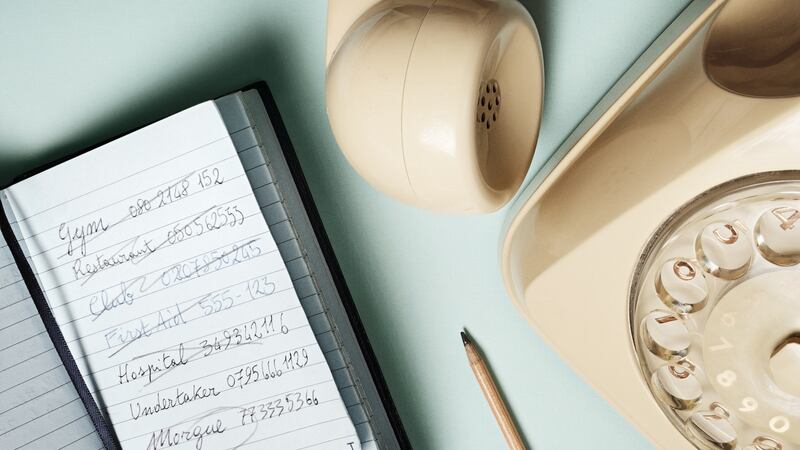
1. Address books
These used to sit beside phones which used to sit in the same place all the time – although the fanciest of houses had more than one phone. Some address books – the high-end ones – even had a natty spring mechanism which allowed users to fiddle with a dial in order to pop the book open on exactly the right page on which the telephone number needed would be written down. Written with an actual pen, that is. Hilarious, right? Does anyone write numbers down anymore? Does anyone go to the bother of actually remembering even their nearest and dearest’s number? Sure why bother when your phone can do all the work and store what you need in the cloud where you can always retrieve it even if you lose your phone. Unless of course the cloud crashes.
2. Ashtrays
There are obviously ashtrays to be found in some homes still but they are dying out along with those who use them and they are nowhere near as prevalent as they were in the 1970s. That was when virtually every home had at least one and most had several in all shapes and size. They were needed mind you because back then people would just light up wherever they found themselves without so much asking those who lived in the home if it was okay.
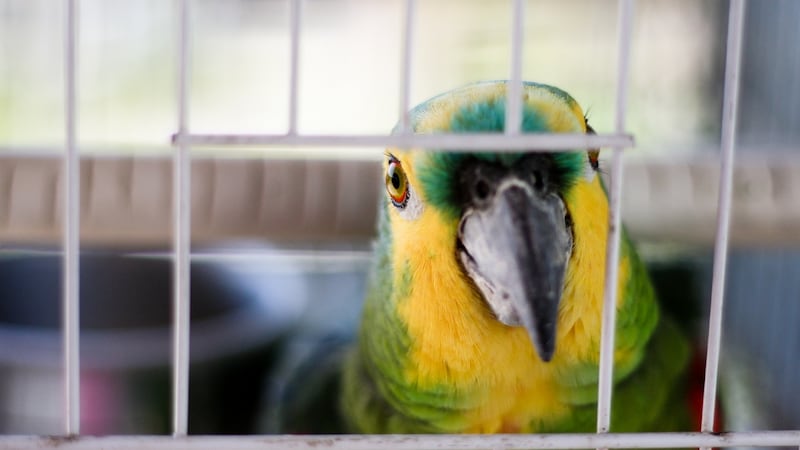
3. Budgies and bird cages
Was there a granny in Ireland 30 years ago who didn't have a budgie? The cages, lined with yellowing copies of the Irish Press, birdseed and bird droppings, were to be found in homes all over the country and they all smelled as lovely as you would imagine.
4. Books
"The question is, can you improve upon something as highly evolved and well-suited to its task as the book? And if so, how?" asked Amazon. com's chief executive Jeff Bezos in 2007. He then set about answering his own question with the Kindle. People do still buy books – and lots of them – but bookshelves are not as prominent in many homes as they once were.
5. Boundaries
Remember them? They were great weren’t they? Remember when we could go into our homes, close the door and leave the outside world behind. That is impossible now as constant access to emails and the incessant whirr of the social media merry-go-round has us constantly on display.
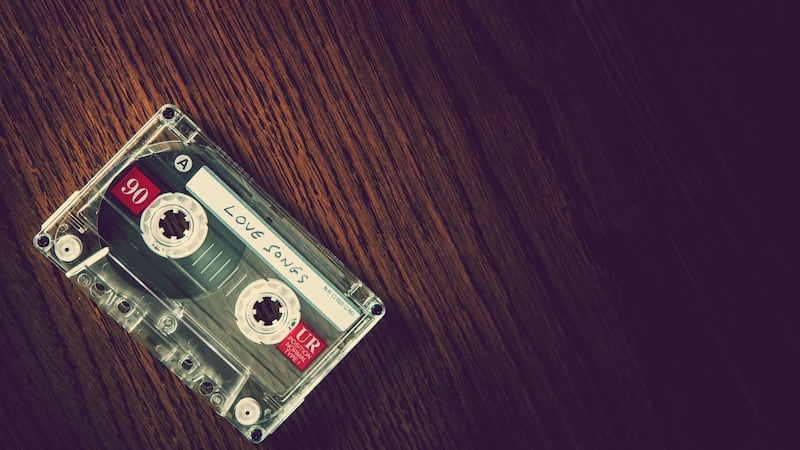
6. Cassettes
If you show somebody a picture of a pencil and a cassette and they have no idea what they are looking at you know they never experienced the joy of making or getting mix tapes or listening in horror as their mix tapes got swallowed by dodgy cassette players. Building a Spotify playlist doesn’t have the same allure.
7. CB radio
The trucker technology briefly – very briefly – became mainstream in the late 1970s as a form of crackly and faceless social media. Hit songs were written about the CB radio as folk took to their bedrooms to chat to other like-minded souls over static-heavy radios using all sorts of ridiculous jargon like breaker breaker and 10-4 and . . . um, that’s all we know. There are still enthusiasts out there but in a world of instant messaging and selfies, its time has passed for most people.
8. Drains rods
There was time when the only option available to people if and when their pipes clogged with unpleasantness was to get out the wooden rods and clear the blockages themselves. Nowadays people are a whole lot more likely to call a man (it is mostly men) to do the dirty work.
9. Decanters
There are not many people in the modern world who have the time or the inclination to decant any class of alcohol into a heavy crystal receptacle. And why would they bother when they can just pour it straight from the bottle into a glass and then into their mouths?
10. Decking
The country went mad for decking back in the day. It couldn’t get it put in fast enough. And for about 20 minutes after it was installed, it looked lovely in many people’s gardens. But then we all realised that decking needed serious maintaining – what with it being wood and the Irish weather and everything. Much of the decking that was put in at great expense during the boom years has now been pulled out also at great expense. Much of the rest of it is now just falling apart.
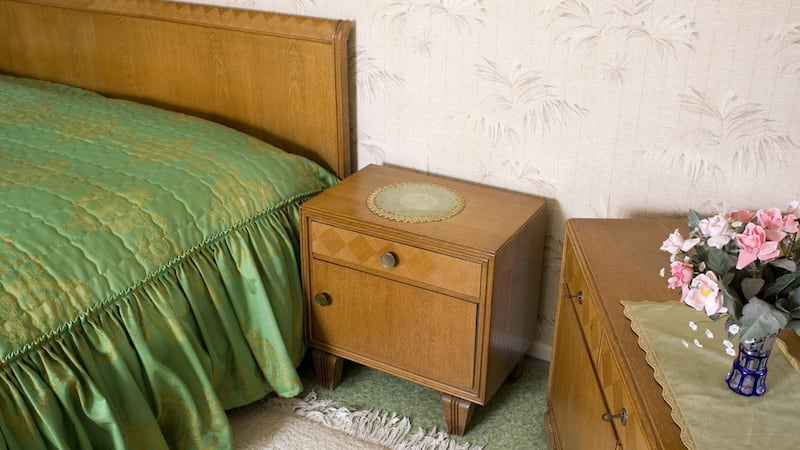
11. Eiderdowns
Before Irish people went and got all posh with their summer and winter duvets – or Continental Quilts as they used to be called to better reflect their inherent foreigness – the choices were scratchy blankets, the like of which you'd imagine would be found in prison wings in the 1950s, and eiderdowns, green satiny puffy bedcovers that would frequently leak feathers all over the bed. Why were they called eiderdowns? Because a real one was made with the feathers from a particular breed of duck of course.
12. Encyclopaedia Britannica
An item on the Ray D'Arcy Show on RTÉ Radio One not long back looked into what a listener could do with their unloved Encyclopaedia Britannica. There were no answers, although a couple of people suggested they could be used as furnishings in a pub. How the once great tome has fallen. It is the oldest English-language encyclopaedia still in production but the way it's produced is radically different in the digital age and the idea that any family would spend in excess of €1,000 on more than 20 leather-bound reference books seems well beyond the realms of possibility. Specially when people can just look stuff up on Wikipedia for free.
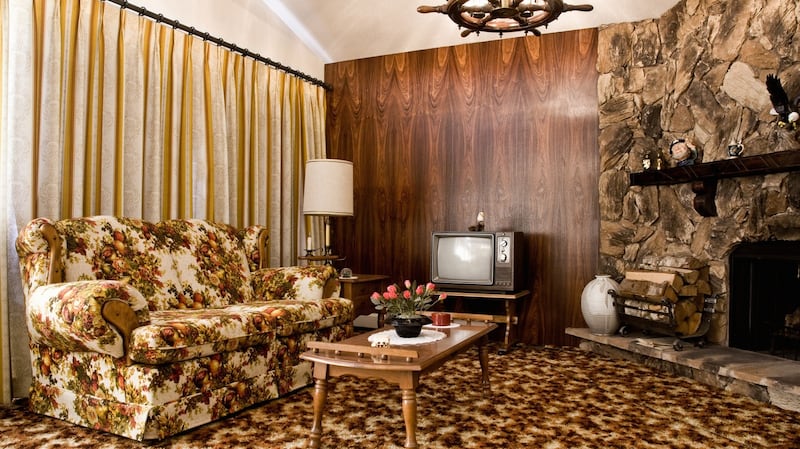
13. Good room
Even the smallest of Irish houses had a good room – sometimes referred to as the parlour. Lowly family members were forbidden from entering unless there were visitors. The room would, typically, have been furnished by a spectacularly uncomfortable couch festooned with grease-catching doilies, white net curtains, heavy drapes decorative crystal glasses and armies of porcelain dolls.

14. JFK
Was there a house in Ireland in the 1960s that did not have a framed picture of the ill-fated US president hanging on a wall somewhere? And is there a single house in Ireland that has a picture of the current White House incumbent hanging on their wall? The answer to both questions is most likely the same.
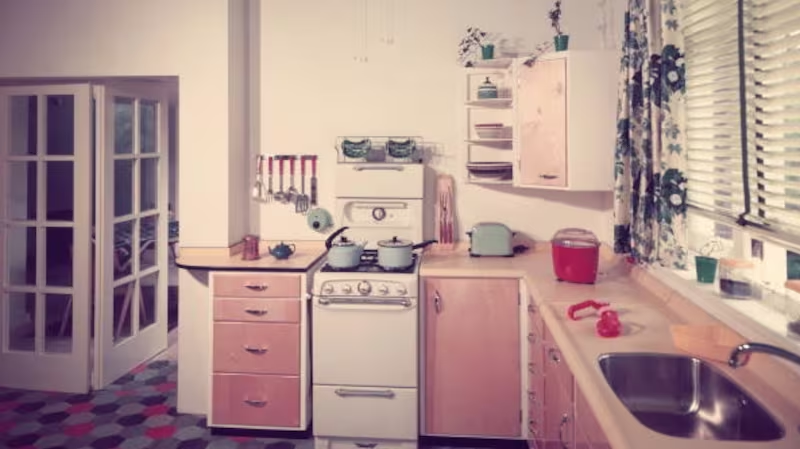
15. Lino
Obviously its full name was linoleum but no one ever called it that. It was sold to a nation unable to afford tiles in their kitchens or as the next best thing and for about 15 minutes after it was laid it looked really good and almost like the real deal. It was a whole lot softer and warmer too. Then time would pass and it would start to look like the cheap knock-off it really was. It would curl at the edges, bubble in places and tear far too easily.

16. Sacred Heart
The Sacred Heart and the red glowing lamp that used to sometimes accompany it are very rarely seen nowadays and have largely been replaced by prints bought in Ikea. Oh sacred heart of Sweden I place all my trust in thee doesn't have the same ring to it, really. The St Brigid's Cross and statues of the Virgin Mary are equally hard to find – unless they are put up in an ironic way in a hipster's home.
17. Stereo systems
They were height of cool back in the day and typically came with a record player, a tape deck and a radio – with the high-end later models adding a CD player to the mix. There were also the absolutely enormous speakers. According to the rule of thumb, the bigger the speakers, the cooler the house. Then everything changed. The turntable and the cassette player were rendered obsolete, then the speakers shrunk. Then everything else went from being real physical things to streamed sequences of ones and zeros played by a talking computer assistant called Alexa.
18. Sewing machines
They were invariably made by Singer. Sometimes they were fancy and electric and sometimes they were operated by pedals. They were used all the time as most people had the basic skills required to stitch things together. Not anymore. Only the most skilled people have sewing machines nowadays. And even they probably don’t bother using them much.
19. Supersers
When they first came along the Superser one, two – and if you were very fancy , three-bar electric heaters were the height of fashion. They were incredibly efficient and allowed people to heat the space they were in in (and not a whole lot more than that). It was even possible to light cigarettes off them. And as long as they were not tipped over, they were pretty safe too. But by God they were ugly.
20. Telephone table
Try telling a child of the 21st century that there was a time that having a phone in the house was something of a luxury and that it was always in the same place and attached to the wall with a cable and watch the look of confusion cloud their face. Most people don’t even have telephones nowadays, never mind a table on which they have to sit.
21. Typewriters
Many homes had clickety-clackety, cantankerous writing machines. They were loud and hard to use, the ribbons were a nightmare to spool and to replace heaven forbid you ever made a mistake while typing.
22. Videocassette recorders
When these magic boxes became mainstream in the early 1980s, they retailed for about £500 in the old money – or about two grand in today’s money. Now you couldn’t give one away. In a world on on-demand streaming, it is hard to remember what a pain the things were – they were big and bulky and impossible to programme and the renting of videos was always fraught with difficulty while forgetting to return the things in a timely fashion led to enormously high fines.











